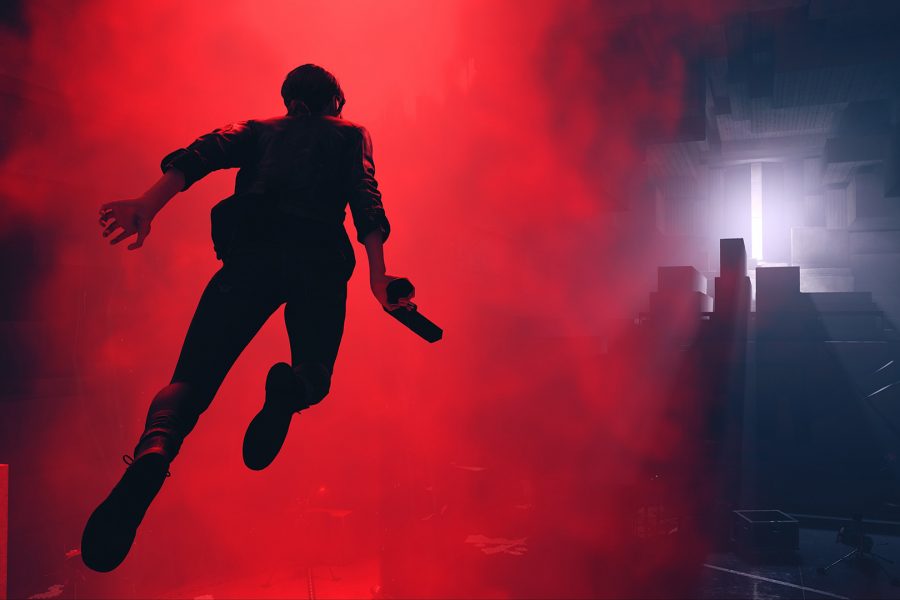“Control” is Remedy’s newest third-person action-adventure game, and with it comes their familiar love of strange science fiction and full-motion video cutscenes. It’s quite a bit to take in as they play around with live action interspersed between in-game engine scenes and even spliced into gameplay. It can be off-putting and campy for sure, but it also leads to some surreal moments unlike anything else other big-name developers are attempting. Chances are, if you’ve enjoyed some of their previous work as I have, that weirdness is part of the appeal. The obvious love of the “X-files,” “Twin Peaks” and “The Twilight Zone” has always been firmly planted in the DNA of their strange aesthetics, and I’m all for it.
In “Control,” players find themselves in the shoes of Jesse Faden, a woman in her late 20s searching for her lost brother. This search has led her to the Oldest House, a large, faceless building run by a mysterious government agency called the Federal Bureau of Control. The structure is a character in itself as its shifting corridors twist and transform. Jesse arrives just in time to witness the previous FBC director’s death, which has led to an invading force called the “Hiss” taking over and wreaking havoc in his absence. Jesse picks up a mysterious “service weapon,” and the building chooses her as its new director tasked to clean up the cosmic mess.
Satisfying shooting mechanics have been a mainstay in Remedy titles since their beginnings in “Max Payne” and its sequel. “Control” is a step back in this regard. I thought the combat was stiff and clunky at first as the early hours leave you with only the aforementioned service weapon. Its default setting as a pistol can be upgraded, and its form can be changed, but it’s just a small slice of the combat.
After earning some upgrades and abilities, the combat opens up and becomes much more dynamic. I found myself leading off every combat encounter by telekinetically lobbing office chairs and chunks of the floor at enemies—every impact spraying the screen with an absurd amount of physics-driven debris. The ability to dash changes the pace of combat, and levitation makes every level a vertical sandbox to play in. Hiding in a corner tends to end badly, as Jesse’s health only recovers with health pickups dropped by enemies. This rewards relentless aggression and diving headlong into combat situations.
Unfortunately, the frantic pace that the game demands can lead to frustration. On multiple occasions, I would step into a new room and sit back to survey the level only to be cornered by floating, exploding-type enemies. The checkpoint system is through “control points” that the player captures in each area. They can be few and far between leading to some downtime as you make the walk of shame back to a boss or difficult encounter. All of these issues, on top of the occasional difficulty spike, can make some areas a chore, but I coasted through most of the game with the exception of some lengthy endgame sequences.
Visually, the game is a real treat. I played it on the Xbox One X and had a good experience, minus a framerate hiccup or two here and there. One particularly nasty bit of texture pop-in left me struggling without details on the in-game map for a short while. Whether it’s a stark grey boardroom or a red dimension filled with pyramids, it all feels of the highest fidelity. Some weird facial-motion-capture hinders the experience a little, but conversations are a rather small part of the experience. The bulk of the game is fighting the glowing red Hiss in ever weirder and stunning locales. Every elevator trip to a different area leads to a new, colorful and psychedelic backdrop for action.
The story is rather simple and is told through the occasional cutscene, but the lore and history of the building are just as fun to dig into. I found myself poring over collectible in-game documents trying to glean information about possibly haunted televisions and stopping to watch funny vignettes on TVs acted out by live-action puppets. The Oldest House holds many secrets, and most of them are funny and surreal.
How Jesse herself fits into everything is, of course, the main plot, and the game handles it well. Wonderfully acted and voiced by Courtney Hope, she is a rather unique protagonist. Her inner monologue is constant and portrays her as a sympathetic and traumatized figure filled with anxiety at each and every turn. She misremembers details and regularly misspeaks, adding to the feeling that she is just as lost as the player, and maybe even more so. Jesse’s arc reaches a satisfying conclusion as she comes to terms with the paranormal event that rocked her childhood and finds her place in the weird world of “Control.”
All in all, I enjoyed “Control” a lot and recommend it to fans of previous Remedy works or anyone looking for a solid 10 to 12-hour action sci-fi experience. The whole experience felt very polished, except for the occasional bad checkpointing. It also has one of my favorite sequences of 2019 in its Ashtray Maze puzzle that needs to be seen and heard, as words don’t do it justice. While there are a few loose ends, the narrative wraps up well enough to warrant a purchase. The already announced expansions should only further enhance the base game, and it will be interesting to see what the future holds for the Oldest House.


